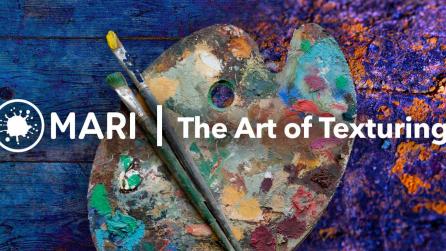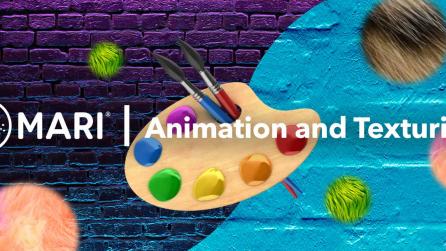Lighting challenges in episodic animation: how to blur the barriers between lighting and compositing
We, as humans, love to binge-watch tv series. We empathize with the characters, memorize the settings, we might even get so attached that we buy show-related merchandise and become part of a fandom or share meme-worthy scenes on social media. But some don't fully understand the amount of work that goes into creating our favorite episodic animations.
We understand both the beauty and challenges of being a lighting artist. So we’ve put together a three-part-article series, “Lighting challenges in episodic animation”, to share with you some of our solutions, tips and tricks that save you time and support your productivity. And we share these with you as we want to see more of your amazing work on our screens.
In the third and final article of our series, we uncover how you can prepare in advance for any obstacles that you may encounter in your career as a lighting artist working on episodic animation projects and solve the ones that you’re already familiar with. How can the look of the project be kept consistent while passing through the lighting and compositing departments multiple times? How can you make a change across several shots in an effective way?
Let’s find out together.
A bridge between lighting and compositing
It’s no news that, as a lighting artist, when you’re working in episodic animation, things need to be done in a fast-paced way. You need to make a lot of changes quickly and effectively. But no matter how much you’ve perfected your workflow, your time management skills or your technique, there are simply some things you cannot control. Like waiting for the renders to complete to then be passed into a tool like Nuke so you can see what the comp is going to look like—that’s now in the past.
With Katana 5.0, you can get some control through Nuke Bridge. It allows you to stream Nuke renders back into Katana, making it possible for you to see how your lighting looks within the context of a comp almost immediately. Besides reducing the waiting times, Nuke Bridge also saves you more time by allowing you to stream your renders through Nuke comp without ever having to leave Katana or even having to launch Nuke. It’s all at your convenience in one place and you can see the renders in the context of comp right away, giving you the freedom to continue making lighting or material adjustments inside Katana.

So how can you launch this Nuke process? This can be done in three ways and two of the modes can be run completely remotely. Just head to the bottom of the Nuke Bridge tab and select Preview Comp, Live Comp or Interactive Comp, depending on your needs.
Although the look development and lighting for a project is produced in your chosen lighting software, a substantial part of it is also worked on in Nuke. This means that your goal should not be just lighting the scenes and limiting your work within the lighting software but also ensuring that you are passing on your deliverables to the next stage (or to your Nuke artists) in a format they can interpret. It’s about translating your work and guaranteeing that they will receive everything they need inside comp.
By having both Katana and Nuke next to each other, feeding them directly, being able to iterate in the first one and instantly observe how it looks in the latter means achieving the power of developing the look much faster and much easier. Consequently, you’ll have more confidence that you are actually delivering everything that is needed—and only what is needed, as there are extra elements that might get rendered which can cause extra render time and/or additional hard drive space that can be avoided. Alternatively, renders might get split up to help comp when they might not need it. The look is not just about the work that has been done in the lighting departments and it becomes a matter of delivering the right information to comp.
But what are some of these key deliverables? Take AOVs (Arbitrary Output Variables), for example. With these variables, you can output data from a shader or renderer during render calculations in order to supply extra options during compositing. This comes with a little extra processing cost as data is being calculated as part of the beauty pass, but it also saves your time and improves efficiency by working with Katana and Nuke in parallel through the power of the Nuke Bridge. You can easily define AOVs as this process is fully supported in Katana. You don’t have to believe us, just see how to set up AOVs and watch them work wonders by yourself. If you set them up once, you can then start using them throughout the pipeline and with other artists, allowing you to have a smooth shift into Nuke.
No matter the size or budget of your studio and whether you collaborate with compositors or you do the comp work yourself, Nuke Bridge is a huge step further for bringing interoperability between lighting and compositing.
Saving time in the future
The common theme we addressed in our previous articles of the series is the significant number of shots that you need to light as a lighting artist working on an episodic animation project. To that, we’ll add the number of people working in parallel on the same project—which calls for a solution that empowers a single lighting artist to visually see the changes the others are making across lots of shots at the same time. Enter Katana 5.0.

This is taken care of in Katana as Nuke Bridge also works with Foresight+, a development on the Foresight toolset which allows for easier, faster, and more artist-friendly multi-shot workflows. At its heart, Foresight+ means you can have multiple renders for dozens of different shots with just as many comps, all of them iterating at the same time. This effectively translates into more productivity as making a wide change across all of them can be done without any hiccups: you just make that change in one place and then see the effects everywhere, across all of your corresponding shots. Ultimately, the quality of all of your shots is raised simultaneously as you can improve consistency, and you don’t need to worry about possible surprises that may arise when lighting conditions change and are worked on one-by-one.
Another benefit of Foresight+ is that this feature comprises an important update to how live rendering is dealt with inside Katana. The attribute changes included in this restructure are communicated to individual render processes. That means that any changes only activate updates for those renders that were affected. This way you can avoid any inaccuracies or wasted time due to unnecessary render updates.
With Foresight+ you can make multi-shot workflows function quicker and more efficiently while working in Katana by reducing the need for stop-start iterations caused by needing to send renders to the farm overnight. The lighting will look consistent across all the other shots, no matter how many, and you can see every change you make, live.
Perfecting the imperfections
If there’s something we learned from this three-part-article series, it’s the fact that working as a lighting artist on an episodic animation project has obstacles that challenge the pipeline, the workflows and the overall look. These obstacles have repetitive tasks at their core but this should only act as an encouragement to try and find new solutions to these old challenges.
Armed with Katana’s powerful toolset and with our tips, tricks and practical solutions, you can start your journey towards more streamlined and enhanced workflows. You too can save time and increase productivity, spend more time creating rather than on repetitive tasks, and have the ability to communicate and collaborate efficiently with other departments or your lighting peers. Look beyond the usual challenges that come with episodic animation projects and take advantage of them by experimenting with the tools Katana offers, so you can find the uninterrupted flow in the pipeline and the bridge between lighting and compositing. The more you conquer the obstacles and perfect your workflows, the sooner we can enjoy your amazing work. In the end, you’re not just lighting artists—you’re the artists who bring light.





